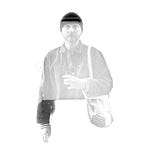Brief Thoughts On Peter Fonda’s The Hired Hand.
So it is often said that the western picture is one of the quintessential of all American arts. Alongside Jazz, baseball and comic-books, no other country does it quite like the USA. The Hired Hand stands at a crossroads in twentieth century American culture, with the old Hollywood meeting the new, as enfant-terribles ran riot through the film industry and reshaped it in their own image.
The Hired Hand is one of the early vanity projects of the era. Peter Fonda, hot off of the success of Easy Rider, which he co-wrote and co-starred (and arguably co-directed) with Dennis Hopper, was given carte blanche, and set out to make his first movie on his own, a western, the genre for which his father, Henry, was best-known.
In a sense Fonda’s movie is George Stevens’ Shane redrawn for the New Hollywood era. A man, having wandered the plains in search of a better life, returns home with a renewed sense of appreciation for what he had before. A more traditional western tale of revenge is woven around this basic outline, with the man ultimately forgoing his own happiness so that those closest to him.
Stylistically the film is very much in keeping with the mood of the time. Thoughtful and elegiac, the picture opens with four minutes of nothing. The film is void of words altogether, be they spoken or of the written kind. A cold opening sees the three men upon whom the opening act of The Hired Hand centres readying themselves for another day in the west, in a kind of visual overture. It’s a joy to dwell on Vilmos Zsigmond’s masterful cinematography, which is the best thing Fonda’s film has got going for it, and to allow Bruce Langhorne’s memorable score to settle in. As an audio-visual experience The Hired Hand is an impressive work, but as an example of the exciting direction the western would take in the decade of the New Hollywood it’s a minor piece.
